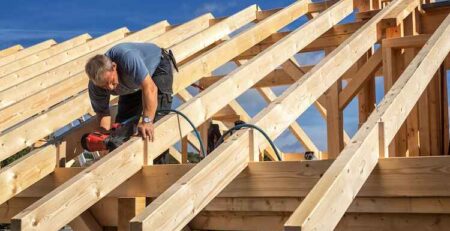What Is Flat Roofing
Flat roofing is a common choice for commercial buildings and modern residential properties, offering a sleek and contemporary aesthetic. However, the simplicity of its design belies a complex system that requires careful consideration. From the materials used to the maintenance practices employed, every aspect of flat roofing plays a crucial role in its functionality and durability. As such, consulting with a roofing specialist becomes essential to navigate the intricacies of flat roofing. Their expertise can distinguish between a reliable structure and a constant headache. Let’s explore the nuances of this roofing style and uncover the secrets to its success with the guidance of a knowledgeable roofing specialist.
Advantages of Flat Roofing
What are the key advantages of flat roofing in modern construction projects? Flat roofing offers significant cost efficiency compared to traditional pitched roofs. The simplicity of the design and the fewer materials required for installation contribute to lower overall costs. Additionally, flat roofs provide:
- Excellent design flexibility.
- Allowing for the installation of rooftop gardens.
- Solar panels.
- Even outdoor living spaces.
This flexibility enables architects and homeowners to maximize the use of space and create unique, modern designs. With proper planning and installation, flat roofing systems can offer long-term durability and energy efficiency, making them a popular choice for commercial and residential buildings.
Common Flat Roofing Materials
Flat roofing systems utilize various materials to ensure durability and functionality, with standard options including modified bitumen, EPDM rubber, PVC, TPO, and built-up roofing. Modified bitumen is applied in layers using torch-down or peel-and-stick methods, providing excellent waterproofing. EPDM rubber is a synthetic rubber membrane that is lightweight for flat roofing and cost-effective, typically installed in large sheets. PVC roofing offers high durability and resistance to chemicals and fire, with seams heat-welded for added strength. TPO, a single-ply membrane, is known for its energy efficiency and ease of installation. Built-up roofing consists of multiple layers of bitumen and reinforcing fabrics, offering longevity and weather resistance. Cost comparison among these materials varies based on the installation process and material quality.
Challenges of Flat Roofing
Facing various hurdles that demand careful consideration and strategic solutions, flat roofing presents challenges that require expertise and attention to detail. One significant issue is ponding, where water accumulates on the roof due to improper drainage. This can lead to structural damage and leaks if not addressed promptly. Another challenge lies in membrane installation, a critical aspect of flat roofing that demands precision to ensure proper sealing and protection against the elements. Proper installation techniques and quality materials are essential to prevent premature deterioration and avoid costly repairs. Overcoming these challenges requires experienced professionals who understand the intricacies of flat roofing systems and can implement practical solutions to maintain the roof’s integrity and longevity.
Key Maintenance Tips for Flat Roofs
Ensuring the longevity and structural integrity of flat roofs necessitates a comprehensive approach to maintenance that encompasses regular inspections, proactive repairs, and diligent upkeep practices. Routine inspections are crucial to identify potential issues, such as cracks, leaks, or ponding water. Regularly scheduled inspections allow for timely repairs, preventing minor problems from escalating into major issues. Debris removal is another essential aspect of flat roof maintenance. Leaves, branches, and other debris can accumulate on flat roofs, leading to clogged drains and water pooling, accelerating roof deterioration. By promptly removing debris, you can prevent water damage and prolong the life of your flat roof. Consistent upkeep is vital for preserving flat roofs’ longevity and operational effectiveness.
Longevity of Flat Roofing
To optimize the longevity of flat roofing systems, meticulous attention to maintenance and proactive measures are imperative for preserving structural integrity and preventing premature deterioration. When considering the longevity of flat roofing, factors such as roofing materials and roofing lifespan play a crucial role. Here are vital considerations to enhance the longevity of flat roofing:
– Regular inspections and repairs to address any issues promptly.
– Proper drainage systems to prevent water ponding.
– UV-resistant coatings to protect against sun damage.
– Adequate insulation to minimize temperature fluctuations.
– Choosing high-quality roofing materials suitable for the specific climate.











